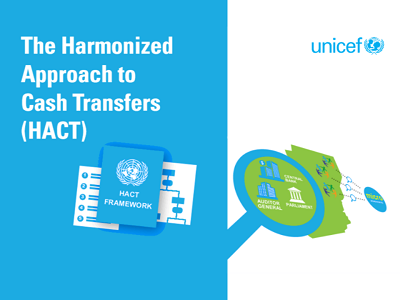Harmonized Approach to Cash Transfers (HACT) establish common principles and process for managing cash transfers among UN agencies that have adopted the approach across all countries and operational contexts. This course describes the principles and processes of HACT and how they work in UNICEF.
Learning objectives
HACT is a common operational framework for transferring cash to government and non-government implementing partners. This course will focus on the principles, processes and implementation of HACT. At the end of this course, you will be able to:
- Define HACT, explain its objectives and identify the key revisions of the 2014 HACT framework
- Identify the key elements of HACT and explain their corresponding processes
- Describe UNICEF specific requirements and staff responsibilities for HACT implementation
Audience
This course is meant for all UNICEF staff responsible for managing results and resources in relation to cash transfers to implementing partners. It may also serve other UN colleagues and partners to familiarize themselves with the HACT framework.
Length
It should take you about 90 minutes to complete the course.
Methodology
This course is designed with application of problem-based learning (PBL), which is a student-centered pedagogy in which learners learn about a subject through the experience of problem solving. Inside the module, learners will learn new concepts through a variety of instructional strategies such as quizzes, a short case study, games and more. There is a final assessment at the end of the course.
Structure
The course is composed of course introduction, 3 chapters on HACT and course assessment. Each chapter starts with learning objectives and ended with summary.
Course introduction
Chapter 1. Introduction to HACT
Chapter 2. HACT processes
Chapter 3. HACT in UNICEF
Course assessment
